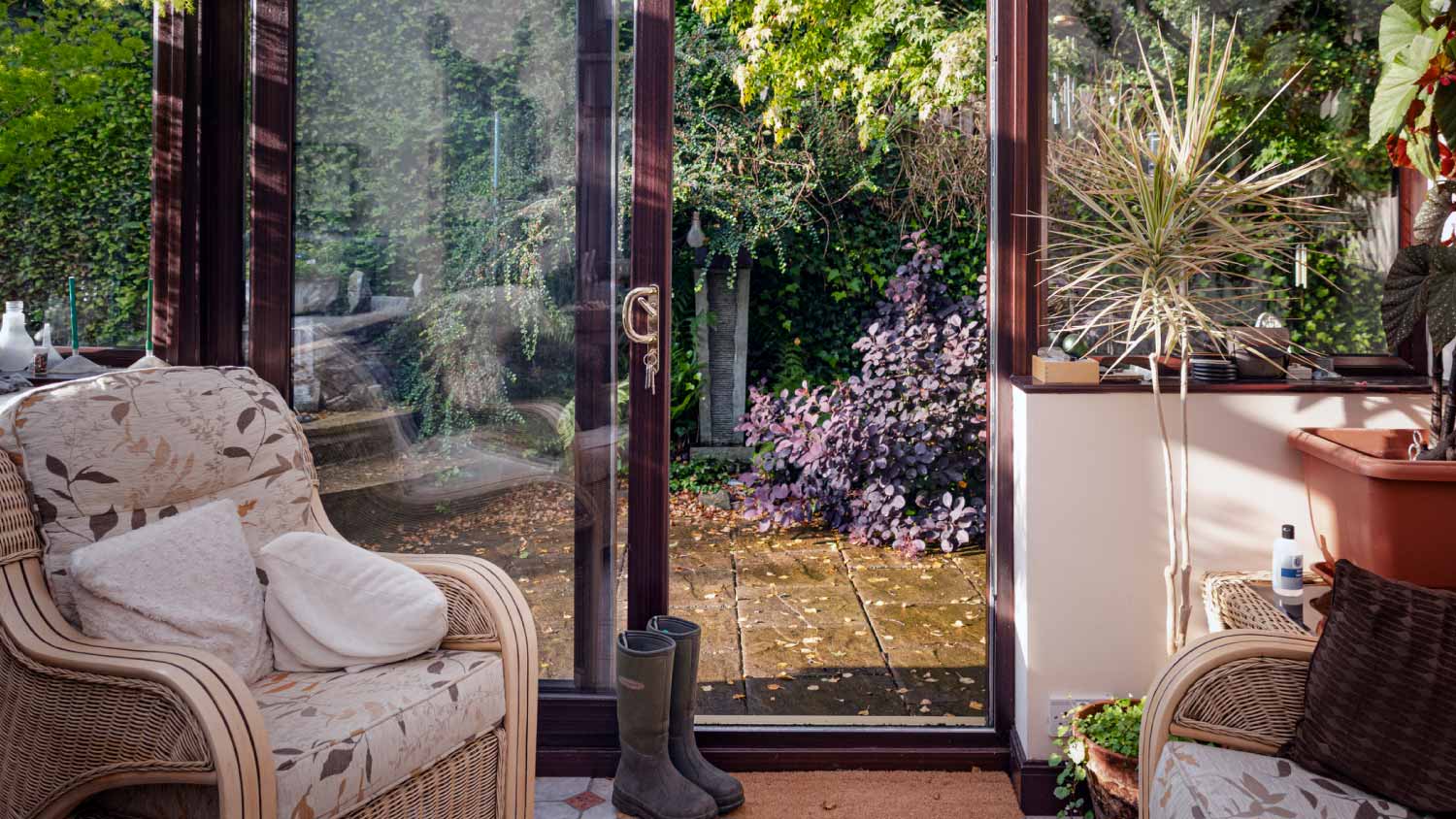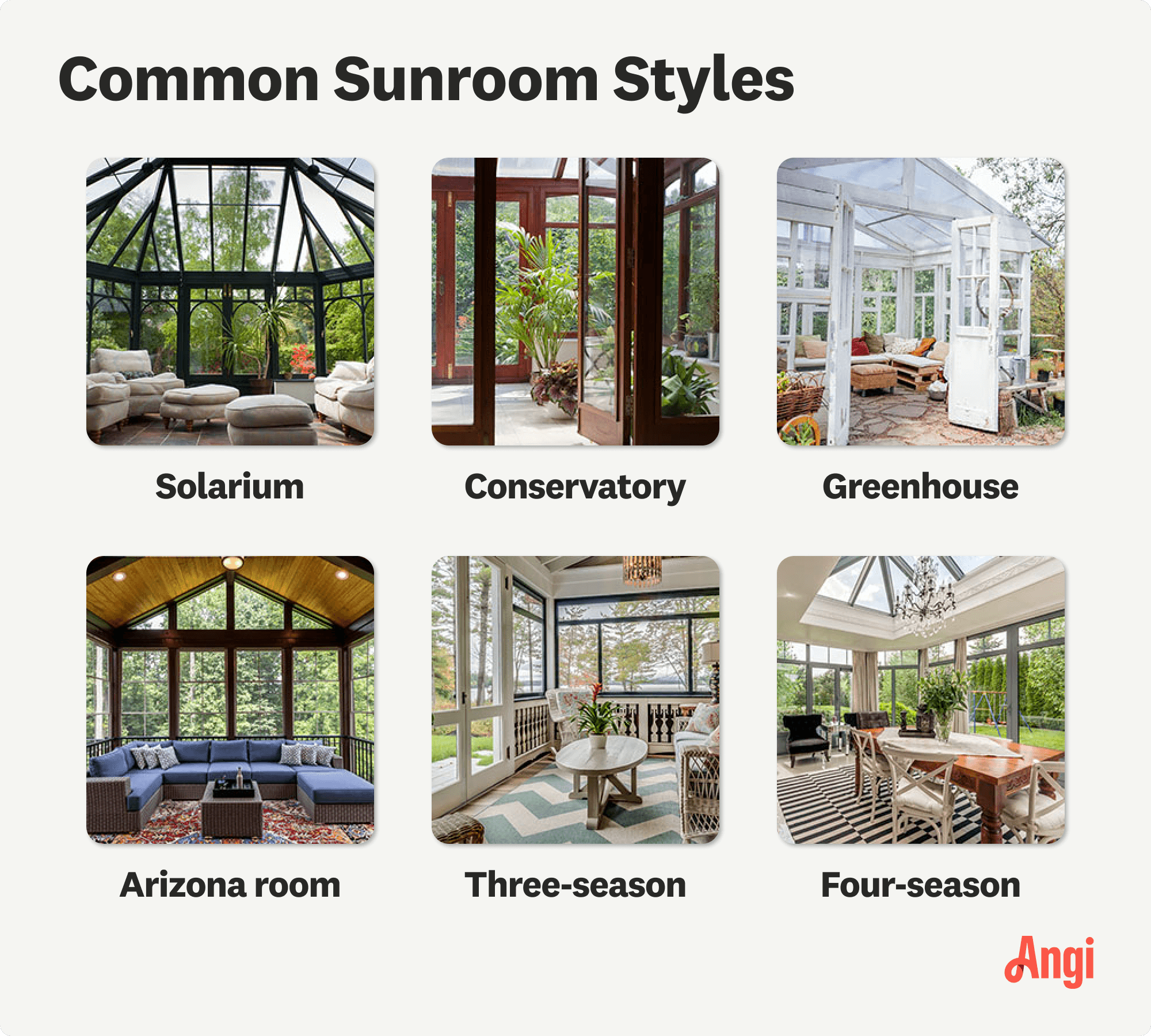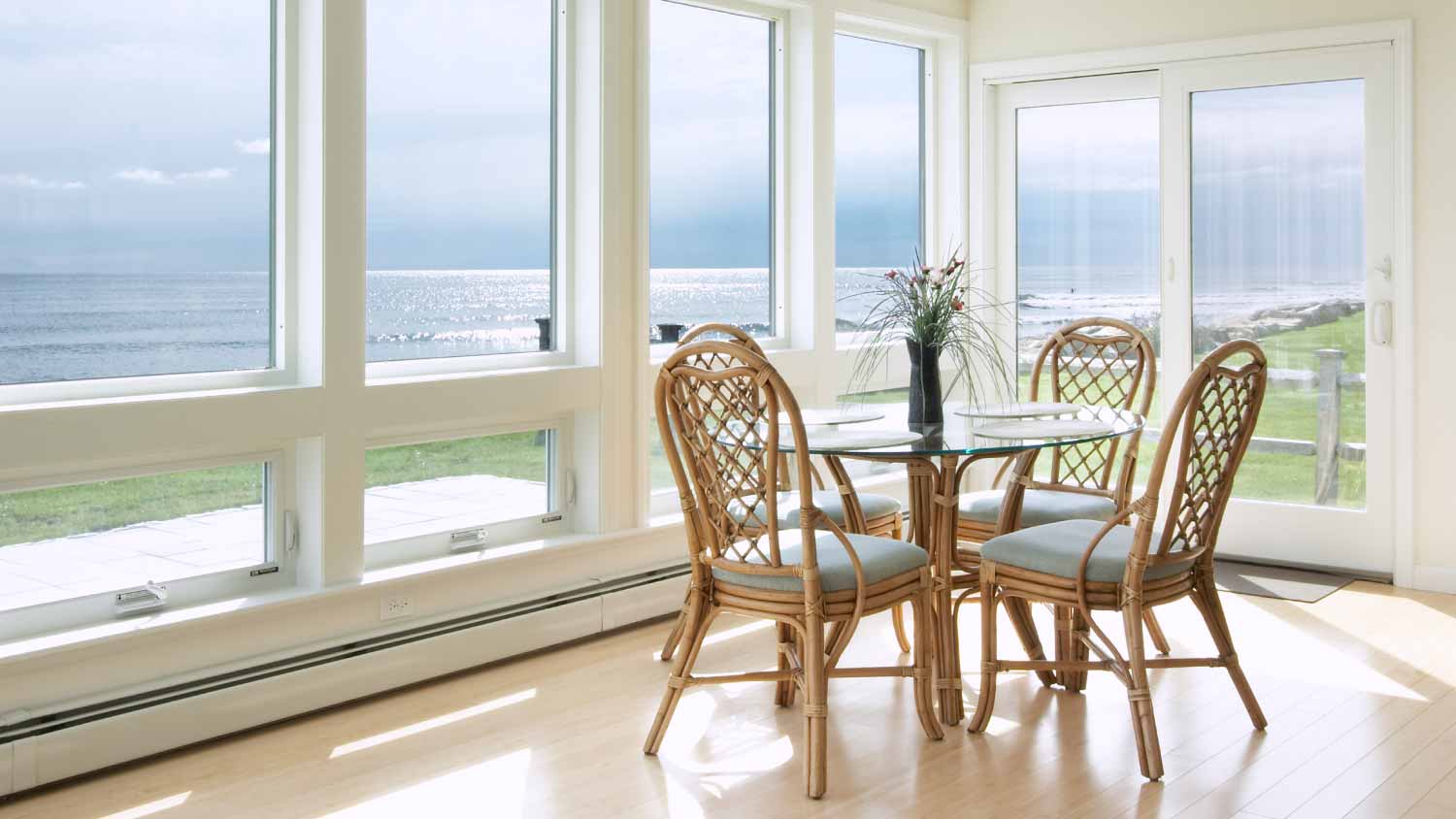
Homeowners can enclose their porches in a few different ways—each having their own price tag. Learn what contributes to the total cost to enclose a porch and how you can reduce the bill.
Brighten up your home’s value with this light-filled addition


Home Value Rating: 3/5
Adding a sunroom yields moderate returns that you can maximize with the help of a pro.
The average return on investment (ROI) for a sunroom ranges between 20% for a screen room to 50% for a three- or four-season room.
Adding a sunroom to your home is a great way to enjoy warm weather and the natural beauty of the outdoors with all of the comforts of staying inside. But is a sunroom a good investment? Depending on the type of sunroom and how it’s constructed, this add-on can offer a 20% to 50% ROI. Learn more about what factors affect the added value of a sunroom so you can decide if it’s the right project for your home.

Sunrooms vary widely in size, use, and construction—all of which can affect their value. Even where your home is located can influence how much of an ROI you can expect. We delve deeper into some factors affecting a sunroom’s value.
While a sunroom is an appealing addition no matter where you live, they may be more in demand in warmer climates. In some hotter areas, buyers may prefer a home with a sunroom, so not having one may cause prospective buyers to skip your listing. In colder areas, sunrooms can’t be used year-round, so while it may be a nice feature, it’s not as much of a must-have as in hotter climates, and the resale value will reflect that.
Also, a very important factor is placement. If your sunroom faces south it’ll get more sun but might need more cooling. If it faces west it can get hot in summer afternoons, despite AC.
A sunroom’s size will be a major contributing factor in determining its value. The larger the sunroom, the more value it’ll add to your home. Below are some common sunroom sizes and the average resale value they add.
| Size (Sq. Ft.) | Average Resale Value |
|---|---|
| 100 | $3,000–$15,000 |
| 150 | $4,500–$22,500 |
| 200 | $6,000–$30,000 |
| 300 | $9,000–$45,000 |
| 400 | $12,000–$60,000 |

The type of sunroom you build will make a difference in its value. A screened-in sunroom like an Arizona room will be worth more than a screen porch, but less than a three- or four-season room. A three-season room, which normally lacks insulation and a heating system, will bring a more moderate ROI than a four-season room, which can be fully enclosed and outfitted with heating and cooling systems.
Sunrooms that are fully integrated into the design of the house, using the same materials, will bring the highest ROI. Sunroom additions that are a different style than the rest of the house or appear to be a lesser build quality won’t make as much of an impact on home value. The sunroom’s foundation, flooring and roofing quality, and overall structural integrity can make a big difference when determining how much value it adds.
Adding a sunroom to your home is serious structural work, so you’ll want to hire a local sunroom contractor to ensure it’s built to code, that you have any permits you need to build a sunroom, and that the design and quality are what you expect. Look for a contractor who builds sunrooms in the style you’re interested in—there are many different types of sunrooms to choose from.
If you’re looking to keep costs down when adding a sunroom, you may be able to DIY some of the finish work like adding trim, installing flooring, hanging drywall, or painting. It’s a good idea—and sometimes legally required—to leave the major construction to experienced, licensed professionals.
To estimate the added value of a sunroom, consider the following factors:
Look at market demand. If a majority of homes in your area have sunrooms, it may be a feature buyers consider non-negotiable.
Explore tax and insurance implications. Adding a sunroom will not only affect your home’s value, but also the amount of tax you pay and your insurance premiums. Find out in advance how a sunroom will affect your recurring payments.
Calculate costs versus potential return: The total cost to build your sunroom includes labor, materials, permits, land prep, and added features. Compare the building costs to the potential increase in value to see how it stacks up.
Determine the effect on your property. If you have a small yard, adding a sunroom may reduce your usable yard space and make your property less appealing to buyers. Determine the ideal size to maintain a balance between indoor and outdoor use of your property.
A sunroom addition costs an average of $150 to $300 per square foot. Costs will vary based on size, materials, necessary site prep, labor, utilities, and more. Sunrooms like screen rooms that have a more basic structure and fewer features will cost less than four-season rooms and sunrooms with premium options, HVAC extensions, and upgraded features.
Whether a sunroom is worth it or not depends on the homeowner, the local real estate market, the room’s construction and function, and other factors. Not sure if a sunroom is the right choice for your home? Weigh the pros and cons to help decide.
| Pros | Cons |
|---|---|
| Adds lots of natural light | High up-front cost |
| Versatile function | May increase taxes and insurance |
| Adds valuable living space | May not be usable year-round |
From average costs to expert advice, get all the answers you need to get your job done.

Homeowners can enclose their porches in a few different ways—each having their own price tag. Learn what contributes to the total cost to enclose a porch and how you can reduce the bill.

Use our expert guide to figure out how much it costs to install a pool enclosure. Establish your budget, then plan your pool enclosure project.

While a solarium addition costs homeowners a fair amount of money, the return on investment is higher than most projects. Learn what affects the total cost and where you can save money.

Are mosquitoes and bugs ruining your outdoor experience? Learn how to build a screened-in porch from start to finish for pure backyard enjoyment.

Get some inspiration and DIY ideas for turning your screened-in porch into a beautiful and tranquil place to enjoy the outdoors in comfort and style.

Dreaming of lounging in a sunroom but not sure how big it should be? Here’s everything you need to know about sunroom sizes and how to choose.